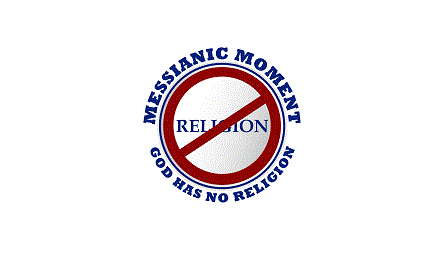There is an undeniable relationship between Yom Kippur and Passover, and together they provide total atonement which allows us to have life everlasting.
Yeshua is the Lamb of God, the Pesach Lamb. His death was the atonement for our sins, but it wasn’t just as the Passover lamb that he accomplished this.
If you prefer to watch a video, click on this link: Watch the video.
If we read Exodus, Chapter 12 we see that the Passover lamb’s blood was not a sin atonement- it was the identification of and covering (a “Kippur”) to identify us as God’s people and protect us from the Angel of Death.
The blood of the Passover Lamb provided life for the people of God.
Yeshua’s sacrificial death as the atonement for our sins may have occurred at Passover but it was the fulfillment of what the Yom Kippur goats do for us. The Yom Kippur goats (the one killed and the one released) are the blood sacrifices that provide for our atonement (Lev. 16:9-10). The scapegoat had the sins of all the people transferred to it before being released into the desert, or as the Bible tells us, to Azazel.
The Talmud interpreted this word to mean a steep mountain, and for many years the scapegoat was thrown off of a steep mountain in order to fulfill this requirement.
Another interpretation (from the Book of Enoch) is that Azazel is a fallen angel. Of course, it is unthinkable that we would be told by God to sacrifice a goat to a god-like satyr in the desert.
According to Rabbi Hertz, the Late Chief Rabbi of the British Empire, in his 1965 edition of the Chumash, Azazel is a rare Hebrew noun that means “dismissal”, or “entire removal”. The transference of the sins of Israel by the Cohen HaGadol onto the goat released into the desert symbolized the total removal of sin from us.
Have you ever wondered why we needed two goats? If all the sins were removed by the scapegoat why kill another one? We know sin can only be forgiven by the shedding of blood and that God is the only one who can forgive and remove sin, so if the killed goat is for sin forgiveness, what does the scapegoat represent?
It represents our Teshuvah. It represents our willingness to let go of our sinful desires and remove them totally from our lives. That is why all the people were present when the goat was released. It represented all of us giving up our sinful ways and desires.
Atonement comes from three things:
- Recognizing and taking responsibility for our sins;
- Our desire and willingness to do Teshuvah and remove sin from our lives; and
- The asking of forgiveness from God once we have done the first two things.
When we accept Yeshua as our Messiah, the blood he shed as the Passover Lamb is the thanksgiving sacrifice, bringing us into communion with God. Yeshua’s death also served as the sin sacrifice which, through his shed blood, we can receive atonement for our sins, just as with the Yom Kippur goat which was killed. And, as the Yom Kippur scapegoat, Yeshua took upon himself all our sins carrying them forever to a place we would never see them again- not just into the desert but beyond the grave.
His death shows us that Passover and Yom Kippur, although two separate events in the real world, are spiritually one and the same thing. Redemption saves us from sin and allows us to be with the Lord forever. The Passover blood represents protection from death and the Yom Kippur blood is our forgiveness from sin. Together these two things provide our salvation, both being accomplished by Yeshua.
In the Acharit HaYamim (the End Days), when Yeshua returns and we are all gathered up into the clouds with him, then will the ultimate fulfillment of both of these festivals be realized. Yeshua is the Lamb of God and the Yom Kippur scapegoat for the world. When he said he was the beginning and the end it represents more than just a timeline; he is the beginning of our eternal life and the end of our sin.
Praise God and praise His son, Yeshua Ha Meshiach, for His goodness, mercy, and ability to save.
Thank you for being here and please share these message, subscribe, and I welcome any comments you may want to add to this message.
Until next time, L’hitraot and may you have an easy fast.
